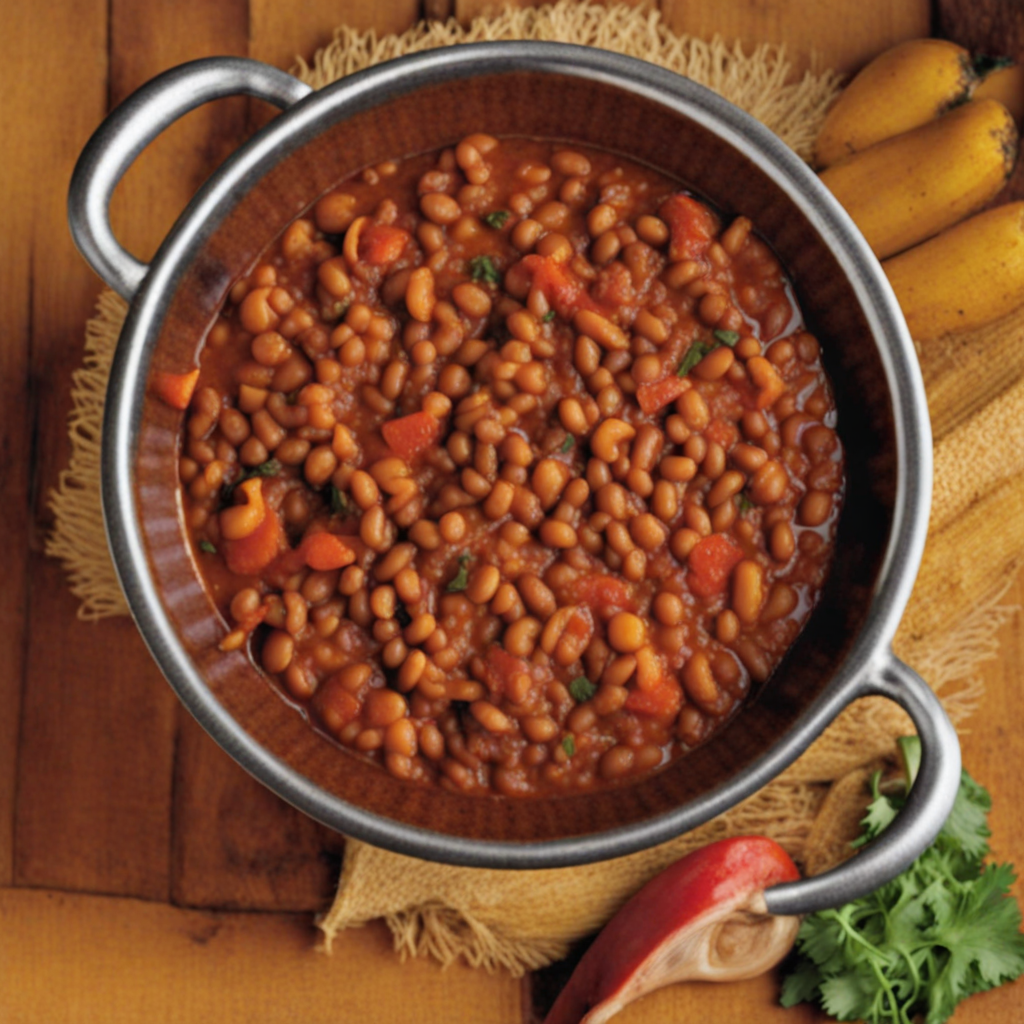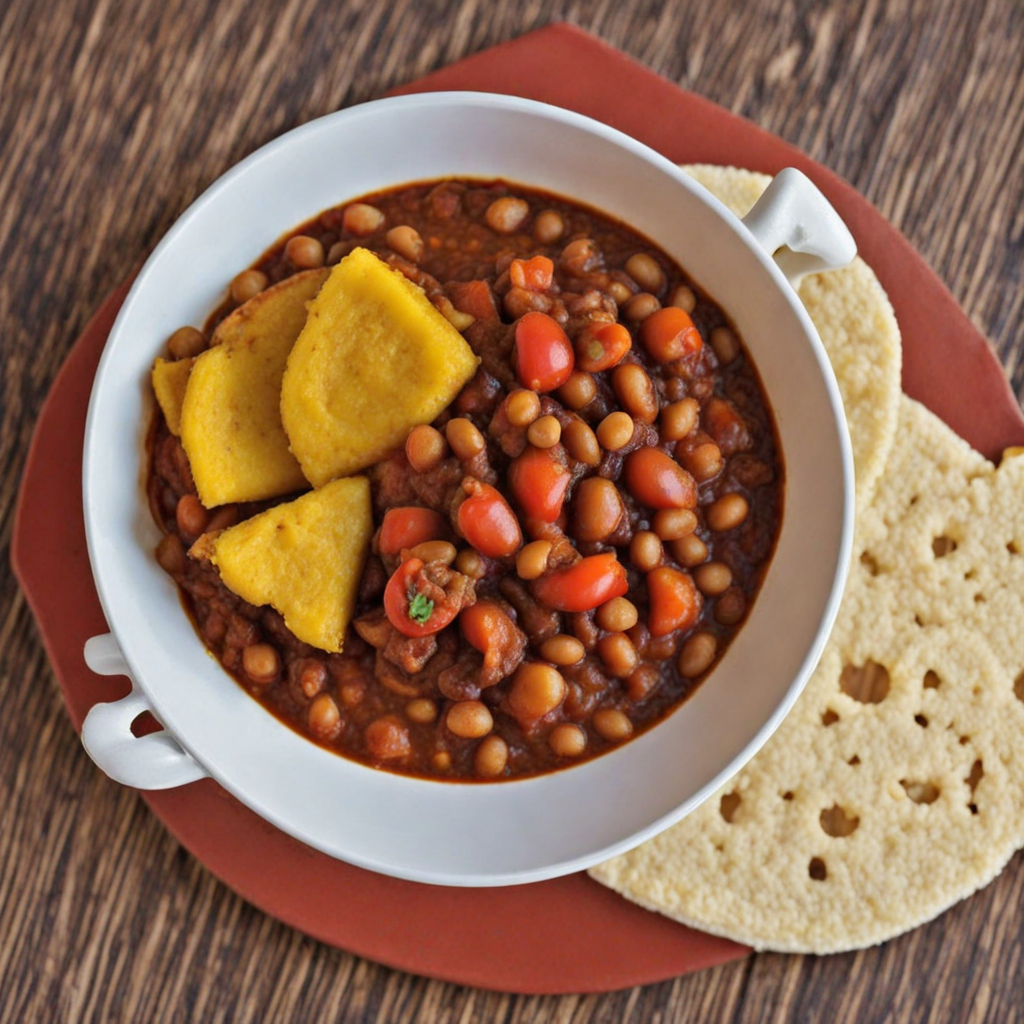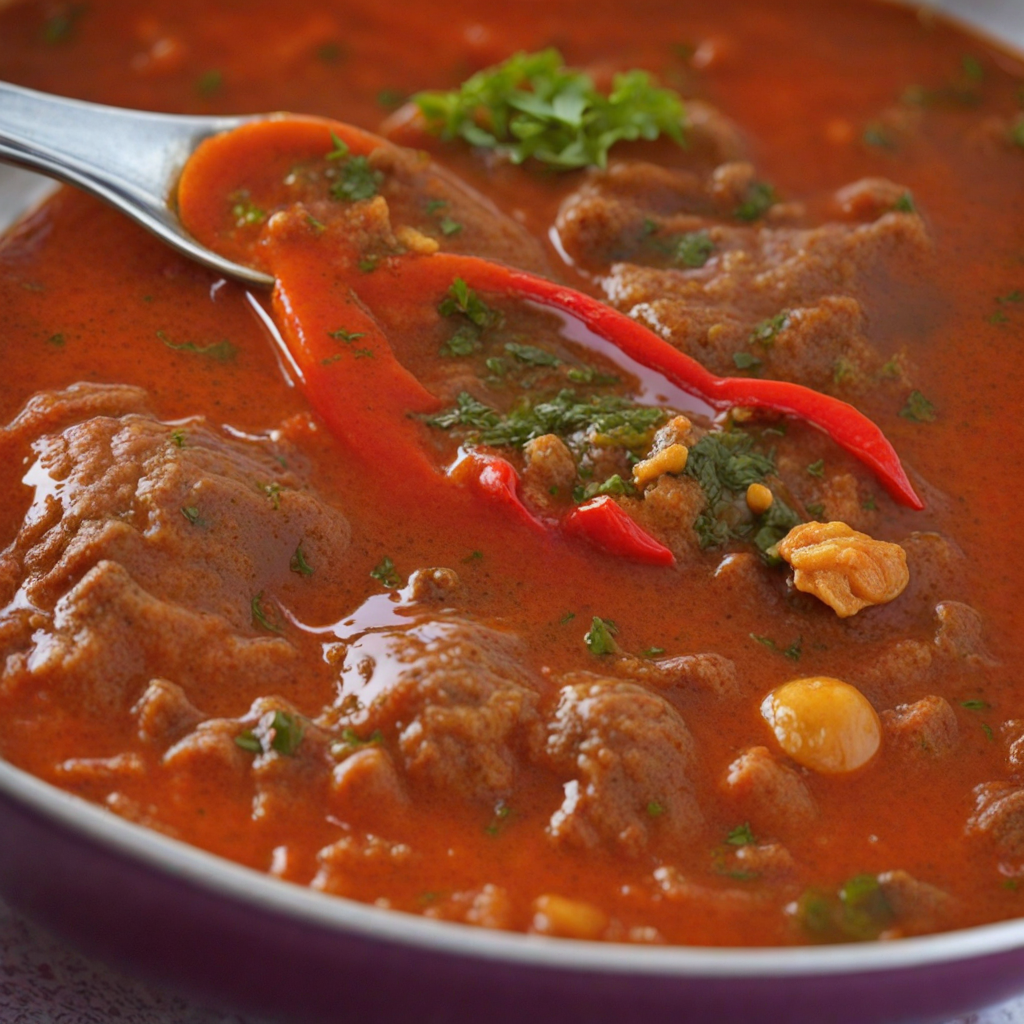Cowpea Stew
Cowpea Stew is a vibrant and hearty dish that reflects the rich culinary traditions of Ghana. This stew is primarily made using cowpeas, also known as black-eyed peas, which are celebrated for their nutty flavor and creamy texture. They are simmered to perfection with a medley of colorful vegetables such as tomatoes, onions, and bell peppers, creating a wholesome base that is both nutritious and delicious. The stew is often enhanced with spices like ginger, garlic, and chili peppers, adding depth and warmth to each bite, making it a comforting dish ideal for any occasion. The preparation of Cowpea Stew involves sautéing the aromatic vegetables until they are fragrant and tender, then adding the cooked cowpeas and allowing them to meld with the spices and flavors. This combination not only brings out the natural sweetness of the ingredients but also creates a rich, thick consistency that is perfect for scooping with rice or traditional Ghanaian fufu. The dish is often garnished with fresh herbs like parsley or cilantro, providing a vibrant contrast and an additional layer of flavor. What sets Cowpea Stew apart is its versatility and adaptability. It can be enjoyed as a standalone dish or paired with proteins such as chicken, fish, or tofu, making it suitable for both vegetarians and meat lovers. The stew is not just a meal; it embodies the essence of Ghanaian hospitality, often served during gatherings and celebrations. With its delightful combination of textures and flavors, Cowpea Stew invites food lovers to explore the rich tapestry of Ghanaian cuisine, offering a unique taste experience that is both satisfying and memorable.
How It Became This Dish
The History of Ademe Dessi: A Culinary Treasure from Ghana Ghana, a nation rich in history, culture, and culinary diversity, boasts a myriad of traditional dishes that reflect the vibrancy of its people and the bounty of its land. Among these culinary gems is Ademe Dessi, a dish that encapsulates the essence of Ghanaian cuisine through its ingredients, preparation, and the cultural significance it holds in society. #### Origins of Ademe Dessi Ademe Dessi, a dish typically made from groundnut (peanut) paste and often combined with various vegetables and spices, has its roots deep in the agricultural practices of the Ghanaian people. The term "Ademe" refers to groundnuts, which are a staple crop in many parts of Ghana, while "Dessi" translates to "sauce" or "stew." Historically, groundnuts were introduced to West Africa by Portuguese traders in the 16th century, and they quickly became integrated into local agricultural practices due to their versatility and ability to thrive in the region's climate. The dish is traditionally prepared in households, especially among the Akan people of southern Ghana, where it is often served with rice or boiled yam. The combination of groundnuts and vegetables reflects the agricultural bounty of Ghana, where a variety of crops, such as cassava, maize, and sweet potatoes, are cultivated. The practice of creating a stew or sauce from locally available ingredients not only speaks to the culinary ingenuity of the people but also highlights the importance of using what the land provides. #### Cultural Significance Ademe Dessi is more than just a meal; it is a dish steeped in cultural significance. In Ghana, food plays a crucial role in social gatherings, celebrations, and rituals. Ademe Dessi is often served during communal events, family gatherings, and festive occasions, acting as a symbol of unity and togetherness. The act of sharing a meal brings families and communities closer, reinforcing social bonds and cultural identity. In many Ghanaian communities, the preparation of Ademe Dessi involves the participation of multiple family members, particularly women, who gather to cook together. This communal cooking experience fosters relationships and strengthens cultural ties, passing down traditional knowledge and cooking techniques from one generation to the next. The dish also serves as a reminder of the importance of agriculture, family, and community in Ghanaian culture. Beyond its social implications, Ademe Dessi is also often associated with nourishment and health. Groundnuts are rich in protein, healthy fats, and essential nutrients, making the dish a wholesome option for families. The use of locally sourced vegetables further enhances the nutritional profile of the dish, reflecting the Ghanaian ethos of eating fresh and natural foods. #### Development Over Time Over the years, Ademe Dessi has evolved, reflecting changes in society, ingredients, and culinary trends. In its traditional form, the dish was prepared using simple, locally-sourced ingredients. However, as Ghanaian cuisine has been influenced by globalization and urbanization, variations of Ademe Dessi have emerged. In urban centers like Accra and Kumasi, where the pace of life is faster and lifestyles have changed, convenience foods have become more prevalent. As a result, some modern interpretations of Ademe Dessi incorporate ready-made sauces or pre-packaged groundnut paste, making the dish easier to prepare for busy families. Despite these changes, many Ghanaians still prefer the authentic taste of homemade Ademe Dessi, valuing the richness of traditional preparation methods. Moreover, the influence of international cuisine has also left its mark on Ademe Dessi. In contemporary Ghana, there are instances where the dish is fused with elements from other culinary traditions, such as adding spices from Indian cuisine or incorporating ingredients like coconut milk, which is often used in coastal Ghanaian dishes. This fusion of flavors is a testament to the adaptability of Ghanaian cuisine, as it continues to evolve while retaining its core identity. #### Regional Variations As with many traditional dishes, regional variations of Ademe Dessi exist across Ghana. In the northern regions, where groundnuts are a significant crop, the dish may be prepared with a heavier emphasis on spices, reflecting the culinary preferences of the area. The addition of dried fish or meat can also be found, enhancing the flavor profile and making the dish heartier. In contrast, coastal communities may incorporate seafood into their versions of Ademe Dessi, showcasing the rich marine resources available. These regional adaptations not only highlight the diversity of Ghanaian cuisine but also underscore the importance of local ingredients and cultural influences on food preparation. #### Modern Resurgence and Global Recognition In recent years, there has been a resurgence of interest in traditional Ghanaian dishes, including Ademe Dessi, both domestically and internationally. As the global food movement emphasizes the importance of sustainability, local sourcing, and traditional cooking techniques, dishes like Ademe Dessi have found a new audience. Chefs in Ghana and abroad are increasingly celebrating the unique flavors and cultural heritage of Ghanaian cuisine, bringing dishes like Ademe Dessi to a broader audience. Food festivals, cooking classes, and online platforms have played a significant role in promoting Ghanaian culinary traditions. The emphasis on storytelling within food, where chefs share the history and significance of dishes, has captivated food enthusiasts and travelers alike. As a result, Ademe Dessi is gaining recognition beyond its borders, contributing to the global appreciation of Ghanaian cuisine. #### Conclusion Ademe Dessi is a culinary treasure that reflects the rich agricultural heritage, cultural significance, and evolving nature of Ghanaian cuisine. From its humble origins rooted in the agricultural practices of the Ghanaian people to its modern interpretations and global recognition, Ademe Dessi is a dish that embodies the spirit of unity, nourishment, and cultural identity. As Ghanaians continue to celebrate their culinary heritage, Ademe Dessi will undoubtedly remain a cherished dish, connecting generations and communities through the shared experience of food. Its journey through history showcases not only the adaptability of Ghanaian cuisine but also the enduring importance of food as a means of cultural expression and connection.
You may like
Discover local flavors from Ghana







